Iranian Imam Qoli Khan and the war with the Portuguese
Imam Qoli Khan (Death of 1042 AH is equal to 1012 AH) He was one of the warlords and rulers of Shah Abbas I Safavid era. He was the son of Allah Verdi Khan of Georgia and Biglerbegi (Governor) Fars province was with Bahrain. Imam Qoli Khan was killed in Qazvin by order of Shah Safi.
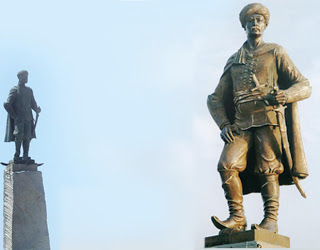
the beginning of life
He is the son of Allah Vardi Khan Qollar Aghasi (The head of the royal slaves) It was that the general of Shah Abbas I and his father was a Georgian.
After the death of his father in the twenty-seventh year of the reign of Shah Abbas, he was appointed as the Amir al-Amrai of Fars and the general of Iran.. In 1026 A.H., when Khalil Pasha, the Ottoman Grand Vizier, invaded Azerbaijan, he was deposed from the position of general..
He gained complete control over the territory of his government and Gamron(Bandar Abbas) And the islands of Qeshm and Hormuz and their belongings were taken from the Portuguese by the order of Shah Abbas and he advanced from the Maghreb to the vicinity of Basra, just as the entire land of Fars and Koh Kiluyeh and Larestan and the ports of the south, from the port of Jask to Shatt al-Arab and all the islands of the Persian Gulf are in the territory of the government. He was placed.
He always had from 25 to 30 thousand well-equipped warriors and even though he had absolute authority in Fars and ruled like an independent king, he never disobeyed Shah Abbas and was always ready to carry out his orders.. He was one of the richest rulers of Iran. Even though he sent precious gifts to Shah Abbas every year, his wealth was so much that his expenses were equal to the Shah's expenses..
Conquest of Hormuz
Hormoz Island was called Jeron until around the 8th century of Hijri and a port called Hormoz is located near the current city of Minab on the coast of the sea. (From the margin of Dr. Moin's corrected proof under the word Jeron) This port was in the possession of the Portuguese for a long time and they had established their strongest military facilities there due to its geographical location, and in the beginning of the 11th century, it was captured by the Iranian troops..
In the war between Iran and Portugal and the conquest of Hormuz in 1031 AD (1622 AD)According to his plan, Imam Qoli Khan first ordered to close the fresh water route to the Portuguese in Qeshm Island and to send the agent of Amir Hormuz to Jolfar. (Ras Al Khaimah) In Oman, his rebellion forced Portugal to oppose Sakhlo, and with the help of the local people, he took Jolfar out of the Portuguese's grip, and through that, the way of fresh water and supplies was closed to the Portuguese of Hormoz, then with the title that the island of Hormoz was a tributary of the Khan before the arrival of Portugal. Lar Bode and Haliye should also act in the same way, they demanded tribute from the kings.
The Portuguese considered this fight against their sovereignty and rejected it with difficulty. This became an excuse for a direct attack on Hormuz, the preparations for which had been prepared and fell into the hands of Imam Qoli Khan. Before the Iranian armies were prone to attack Hormuz, the Portuguese commander of Hormuz attacked that island in order to open the fresh water route from Qeshm, and in Rajab 1030 he subjugated a part of it and built a castle there in a hurry to protect the Portuguese side..
Imam Quli Khan came to the port of Jeron with 5000 troops in Rabi-ul-Awl of 1031 AH and immediately sent a part of his companions led by Amaquli Beg Mamsani to capture the Portuguese fortress of Qeshm.. The Iranian troops shelled the fort from the land and the British planes from the sea. At this time, about 250 Arabs from the Jolfar people and the Portuguese government were defending the fort, and Roy Freire, the naval commander of Hormuz, was among them.. The Portuguese and Arab Sakhlo soon felt that they could not do anything against the attacks of the Iranian army and British cannons and planes, so they stopped defending and forced their commander to surrender, and he surrendered. They took their ships, but the Arabs and Iranians who had joined the enemy fell into the hands of Imam Qoli Khan's troops and were killed for the crime of complicity with the infidels and treason.. After the conquest of Qeshm Lashkarians, Quli Khan left part of his forces as Sakhlu on that island and they came to Bandar Abbas with British ships..
In Rabi al-Thani 1031 AH, the British naval forces anchored next to Hormuz Island and waited there for the troops of Imam Qoli Khan to arrive from the land.. After the arrival of this army, the Iranian and British allies besieged the military fortress of Hormuz on the 27th of Rabi al-Thani and finally subdued it on the 10th of Jumadi al-Thani of this year.. The Portuguese prisoners, who were about three thousand, surrendered to the British and were transferred to India according to the agreement, and they took the Arab and Iranian prisoners and killed them for the crime of treason and took their heads to Bandar Abbas.. The spoils, treasures, weapons and cannons of the Portuguese Hormuz fell into the hands of the Iranian troops and British sailors, but most of them went to the Iranians and the British sold their share to the Iranians.. King Hormuz-Mahmudshah, Brother Firoz Shah – who sat in the place of his brother in Dhul-Qaida 1017 AH and was humiliated during this period under the Portuguese commander and the viceroy of India, who had the name of royalty, was captured by the Iranian troops, and with his arrest in the second 10th of Jumadi 1031 of the Hormuz dynasty, which for several centuries, sometimes with prestige and Independence and for some time they ruled under the support of the Sultans of Portugal and Spain.
The departure of Hormuz from Portugal was the biggest blow that was dealt to them in the Persian Gulf. This point was the last refuge of the Portuguese naval forces in the Persian Gulf, and they tried to maintain this very important point and keep the trade of the coasts and islands under their control.. With the loss of this son, the hope of the Portuguese turned into despair, and Hormuz after 118 years (From 913 to 1031) Out of the hands of foreigners.
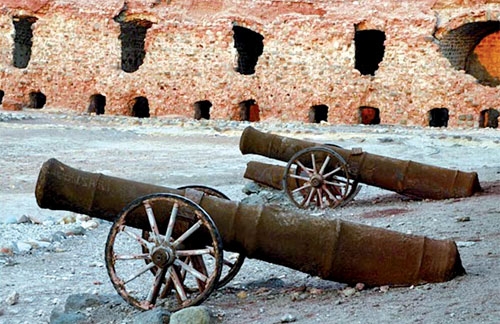
end of life
After the death of Shah Abbas, the jealousy and hatred of Shah Safi, the successor of Shah Abbas and his mother and one of his relatives named Etimad al-Dawlah towards Imam Qoli Khan and his children came to an end.. They considered him a serious threat to Shah Safi's reign. Therefore, they always wanted to destroy him and his children.
During these days Sultan Murad Osmani attacked and destroyed the city of Tabriz. Etemad al-Dawlah and his entourage asked Shah Safi to seize the opportunity and ask all the governors of the provinces, including Imam Quli Khan, the ruler of Fars, to go to Qazvin with their armies.. He also went there to closely monitor the progress of affairs.
When this order reached Imam Qoli Khan, despite his old age and weak temperament, he immediately started to equip his forces with all his strength and moved to Qazvin with his three children..
In Qazvin, when everyone gathered, they celebrated and rejoiced for three days and nights at the order of Shah Safavi. Imam Qoli Khan excused himself from attending the celebration due to his old age and incapacity. The king accepted his excuse, but his sons participated in the celebration.
After three days of celebration and joy, Shah Safavi Na Gahan left the Majlis and went to another room. An hour later, some strong guards of the temple entered the public hall with a group and took Imam Qoli Khan's three children and beheaded them.. The heads were brought to the Safavid Shah in a tray. Shah Safi ordered to take the heads to Imam Qoli Khan and to separate his head and return all four heads to him.. It is said that when Dejkhaiman entered the residence of Imam Qoli Khan, he was engaged in prayer, and when he learned of their intention, he asked for time to finish the prayer, and they accepted.. Imam Qoli Khan finished the prayer calmly and without any fear and prepared to beheaded and they did so.. The heads were taken to the Safavid Shah and he sent all four heads to the harem to his mother. After that, he ordered the Viceroy of Fars to kill all the children of Imam Qoli Khan without delay, so that there would be no descendants of that great man..
It has been written about him that he was a brave, forgiving, people-oriented man and a supporter of literature and art, and he never failed during twenty-five years of fighting with enemies..
Imam Qoli Khan built a school and many places in Shiraz and also built the Khan Bridge which is still standing in Marvdasht..
References :
Safa, Zabih Allah, History of Literature in Iran (۵جلد), Firdous Publications.
Dehkhoda dictionary
Alam Arai Abbasi
The life of Shah Abbas I, Nasrullah Philosopher (C 2 p. 97)
Roger M. Savory, Emāmqoli Khan. Accessed on September 20, 2007
Andrew J. Newman (2006), Safavid Iran: Rebirth of a Persian Empire, p. ۶۵. I.B.Tauris. ISBN 1-86064-667-0( Taken from Wikipedia, the free encyclopedia )
Footnote:
↑ Roger M. Savory, Emāmqoli Khan. Accessed on September 20, 2007
↑ Andrew J. Newman (2006), Safavid Iran: Rebirth of a Persian Empire, p. 65. I.B.Tauris. ISBN 1-86064-667-0


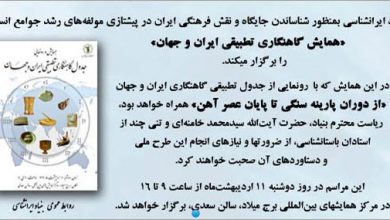
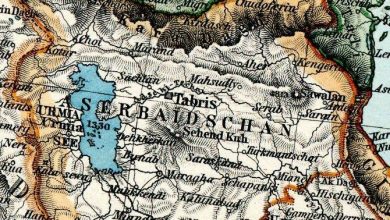
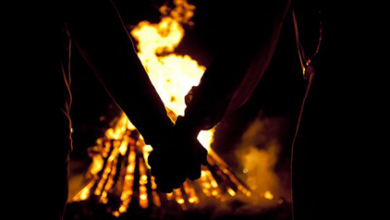
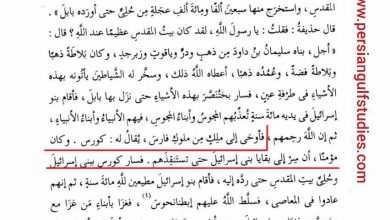
You did not introduce a name from the Qashqai army or Imam Qoli Khan as Qashqai, it is really interesting
First of all, the total presence of Turks in this region dates back to six hundred years ago, during the time of the Seljuk Turkmens, and they have no history in this region at all.. Secondly, there is no ancient work with even a history built by the Turks in any part of the world. Soma do not have their own script and use the script of other tribes. In the end, the main origin of the Turks are actually the Turkmen, and the word Turkmen means I am a Turk. It means that those who do not look like Turkmen and Mongols are actually Turks and their language is Turkic.. Can a race have several faces?!!!!!!
We are proud Qashqai Turks. Qashqais moved from Georgia and the Caucasus to Azerbaijan and then to Shiraz. Just when the Caucasus and Georgia were part of Iran. So be wise and don't attach to us things that you and your family deserve out of greed and envy..
Imam Qoli Khan is Turkish and not Qashqai. He is not Iranian..
It has just arrived!!!!!! Ah, Central Asian immigrant, the same word Iran that you wrote, when the same word was placed on this soil, the world did not know that there was a race called Turks, and you were confined to four tents in the plains of eastern Shi Ong China.. It has just arrived!!!!!
Yes, he was not Iranian, he had become Iranian, he was of Georgian descent, not Qashqai